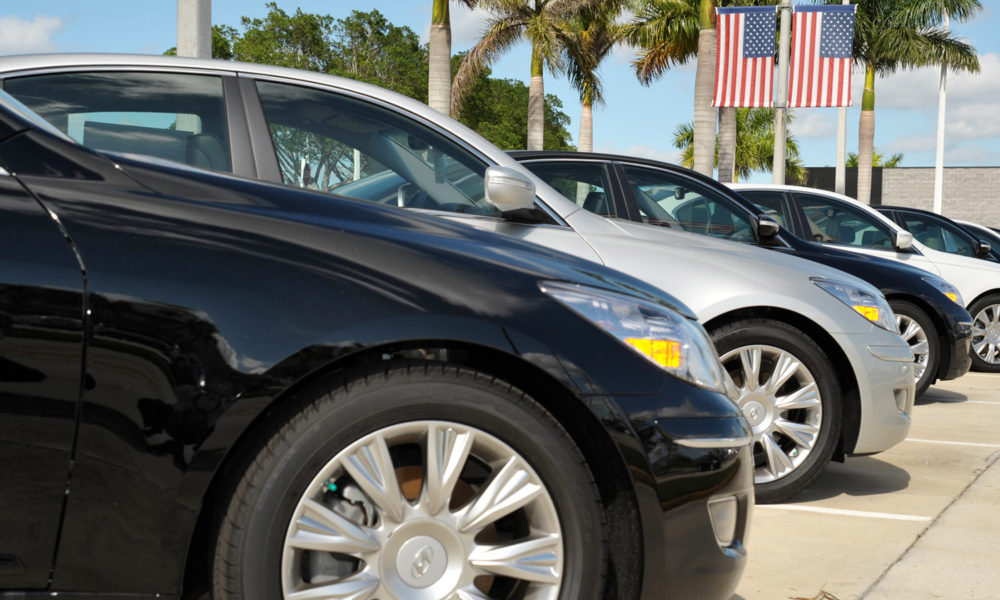A little over a year ago, EPA and NHTSA proposed rolling back fuel economy and vehicle emissions standards based on deeply flawed analysis. Earlier this month, EPA and NHTSA finally got around to “fixing” the plethora of errors and have submitted the updated rule over to the Office of Management and Budget for review before finalization. A few details have now been reported about the contents of the rule and extent of the “fix,” and they are so mindbogglingly stupid that I feel I need to share them with you.
It’s still a rollback
There’s been a lot of talk about how the administration’s new rule is more stringent than the proposed rollback—whereas previously they were flatlining the standard at 2020 levels, now they’re increasing the requirements to 1.5%/yr. But digging deeper suggests there are little if any additional benefits of the change.

Amazingly, the Trump administration’s latest proposal fails a fundamental test of any rational policy action, with their own analysis showing net negative impacts for the rule.
First off, the rule the administration is trying to replace requires a level of improvement of nearly 5 percent a year, so while the administration’s latest proposal targets about 30 miles per gallon (mpg) on-road, that’s well short of the 36 mpg the current rules are slated to achieve for consumers in 2025.
Incredibly, the agencies’ previous analysis said that setting no rules whatsoever would result in more than a 1 percent a year improvement, so this latest update is essentially only what the agencies claim the automakers would do anyway…and much less than the greater than 2 percent a year improvement we’ve seen the industry average over the past 15 years. Thanks for nothing!
The administration admits that the rule is a bad idea
The most egregious reported aspect of the recently submitted rule is that the administration’s own analysis shows that the rule is NET NEGATIVE for the country. They’ve had months to cook the books, and even after slightly increasing the stringency of the rule, literally the best they could do to justify their rollback is show that their revised rule will cost the country up to $40 billion, on net.
That the proposal is a bad idea is not surprising—we’ve pointed out repeatedly that the rollback benefits no one but the oil companies, as it costs consumers at the pump, kills jobs, and increases emissions. Incredibly, the agencies now agree with us…and are proposing to roll the rule back anyway.
Let’s say it again, just so it’s clear: by their own analysis, the administration is proposing a change that will leave us worse off.
The “SAFE” rule will kill people
In its original proposal, the administration claimed that the rule would save thousands of lives, thanks to newer, cheaper cars that would make people want to get rid of older vehicles faster. As the EPA’s own scientific advisory board (among others) have shown, this analysis made no friggen sense and violated basic economic theory.
Good news: they’ve updated their modeling, and guess what—those 12,000+ lives saved are now reduced to 470 lives. But wait, you say…that’s still 470 people that would be saved by this rule, isn’t that a good thing? Well, those 470 prevented traffic fatalities (under the administration’s assumptions) are nowhere near enough to offset the premature deaths related to the 80 billion gallons of additional gasoline consumption in the administration’s proposal. Previous analysis of the rollback found about 5,000-10,000 deaths resulting from increased refinery emissions, and that number is not likely to change significantly based on the reported changes to the rule.

You might think record levels of fuel consumption would cause the administration to pause its insanely stupid rollback of the strongest policy lever we have to curb gasoline consumption…but you would be sadly mistaken. (FHWA)
In short, the administration’s SAFE rule is a death trap that will especially harm the most vulnerable.
Consumers are big losers…
The administration talked bigly about how much cheaper its cars would be, and that would mean cars would sell like hotcakes, etc. But the latest analysis shows that the retail price of a new vehicle will be reduced by just $1,000…and cost its owner an extra $1,400 to fuel. Does that sound like a bargain consumers are going to want?
Even the best car dealer in the world would have to make quite a pitch to sell consumers on the idea of throwing money away like that.
…but everyone will suffer.
The end result of all of this is what we’ve said all along—the rules we’ve got on the books right now are great for consumer choice, leading to the most efficient cars, trucks, and SUVs consumers have ever had available. The auto industry is on a record streak of 5 consecutive years of 17 million new light-duty vehicles sold, a volume they’d previous only hit twice before. And we need to be accelerating improvement in vehicle efficiency for the U.S. to maintain leadership in this space, rather than letting China and Europe accelerate on past us as we throw things into reverse.
The Federal Highway Administration just announced that we are at a record high level of fuel consumption. Even with more efficient choices, it takes a long time to transform a fleet of 270 million vehicles. It’s like that old canard about turning around an aircraft carrier—except in this case, we see the iceberg, and the current administration isn’t even bothering to turn the wheel as we head straight for it.

